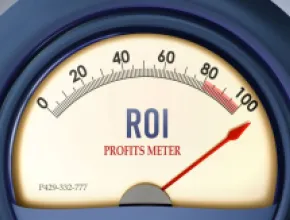Are corporate meetings coming back strong this year? It depends on whom you ask.
Some say that pent-up demand for corporate meetings is bursting onto the industry landscape like a gushing dam. Companies are starting to spend some of their stashed cash for meetings, incentives and other events.
Some planners also report that corporate meeting budgets are rising, occasionally soaring into double-digit increases. As a result, demand for space in some cities is bringing tight availability and higher rates.
Others are more circumspect in their outlook, offering a more guarded prediction about corporate meetings in 2011 and beyond. One source of their caution is the increasing cost of fuel and rising travel costs.
Still other predictions indicate healthy but not overwhelming improvement. MPI’s Future Watch 2011 survey of meeting planners in all sectors of the industry indicates that meeting volume, number of attendees and overall spend will see moderate increases throughout the industry, resulting in a positive uptick of about 8 percent growth for this year.
Rising Requests
According to Issa Jouaneh, vice president of Maxvantage and American Express Meetings & Events, requests for meetings in the fourth quarter of 2010 increased by double digits over the same period in 2009. He also notes that meeting size is on the increase.
"Top-tier destinations are showing gains year-over-year of between 5 and 20 percent," Jouaneh says. "Also, more people are attending, and we are expecting to show high group rates for the first time in two years as hotels have learned to price in an environment with shorter lead times."
David Scypinski, senior vice president of ConferenceDirect, agrees, saying that the meetings "faucet" has been turned back on. He observes that corporations that didn’t do meetings in 2009 and 2010 are once again booking them, especially in first-tier cities such as Washington, D.C., New York, Chicago and Boston.
"We see a lot of pent-up pressure to spend money on meetings," he says. "We booked $440 million in 2010 meetings spend and $100 million of that was in December. What we are waiting now to see is whether the dam is not just leaking but gushing, and whether the trend will continue through the first quarter of this year or return to a more traditional level."
At Egencia, a global business travel management company, Debbie Grossi, director of meetings and incentives for North America, says her corporate clients are putting a lot more people on planes than they were a year ago.
"Our company booked about 70 percent more flights in January than it did for the same period in 2010," she says. "From a numbers point of view, this means more people are attending more meetings. We also are seeing tighter hotel availability in the more popular cities like Vegas, Miami and San Francisco. This time last year we could just call a hotel and they would ask ‘when do you want to come and what rate do you want to pay?’ This has largely disappeared."
Planning lead times are shifting as well, according to Jouaneh.
"Though we are booking now mostly for this year, we are also booking for three and four years in advance as well," he says. "Lead times are trending to 60 to 90 days out instead of 30 and below, where they have been recently."
Cost Containment
Why are corporations returning to the meeting room?
In general, there seems to be pent-up demand for conducting business, particularly when it comes to such objectives as building relationships with customers and employee training. At the same time, emphasis remains on achieving objectives and in keeping costs in check.
"We are doing a lot of internal sales kickoff and training meetings," Grossi says. "While people don’t seem to be as concerned about the AIG Effect as they once were, there’s still plenty of pressure to demonstrate ROI because budgets are certainly not free and easy. So we are looking at costs line by line to stay within client budgets."
Jessica Schanbaum, meeting director at Crowne Plaza Suites Dallas-Park Central, also sees a lot of concern about spend.
"We are seeing a rise in meetings, but a lot of people are doing their own tech and in-house audiovisual for cost savings," she says. "We usually just provide a screen and that’s about it."
Tight control on meetings budgets is now often in the hands of people other than planners, says Scypinski, observing that procurement officers have gained a lot of power in the corporate environment during the recent recession.
"Companies have been tightening up meetings spend for some time now, but departments that specialize in hammering hoteliers and other suppliers are now the ‘demagogues’ in the corporate world," he says. "They have really put the pressure on hotel companies in the last couple of years. Now the tide is changing, and times are getting better for hotels, so they are becoming more selective and don’t want to take on the cheap deals."
Another current focus in corporate meeting planning is on the size and scope of meetings. This emphasis sometimes translates into smaller events that may be more regional in nature.
Virtual Goes Mainstream
The recession has been an impetus toward more industry acceptance of virtual and hybrid meetings. Though most industry denizens believe face-to-face meetings are a necessary and perennial staple that won’t disappear, there is now more acceptance and use of technology platforms.
"Hybrid meetings are definitely on the increase," Jouaneh says. "Clients use technologies such as Cisco’s Telepresence to extend the reach of face-to-face meetings when they have a limited number of attendees and content can be leveraged to others. Technology can also repurpose content.
"There is a lot of investment in money and effort for training, product launches and such," he continues. "So people have become more strategic as they look at ways to measure return on their spend. Virtual meetings are not overall solutions. We work with clients who have built meeting policies to set which kinds of meetings need to be face and when should be virtual."
Jennifer Kuesel, director of marketing and meetings for NextGen Healthcare, says her company looks to grow its number of meetings this year by 10 to 12 percent, adding that both face-to-face and virtual meetings are components in the lineup.
"I personally don’t think face meetings will ever go away, because some aspects of business don’t move forward without in-person interaction," she says. "Technologies are appropriate for some business needs, such as conveying a message after a face meeting."
MPI’s FutureWatch 2011 report also acknowledges wider acceptance of virtual meetings.
"Technology, it seems, has finally gone mainstream in an industry that has long pushed back against what was viewed once as a direct threat to in-person events," the report states. "Meeting professionals maintain that face-to-face meetings are far better equipped to forming lasting relationships, business partnerships and revolutionary ideas, but acknowledge the sufficiency of on-line meetings, especially in some sectors such as education."
Sellers’ Advantage
In navigating industry trends and changes this year as corporate demand for space and services rises, planners are looking at tougher negotiations with suppliers.
"Meeting planners are facing tougher negotiations as business travel rebounds and more people are heading back on the road," Jouaneh says. "There are signs of limited availability in some destinations. About 60 percent of our buyers are saying lower rates are now harder to find—and that compares with 30 percent who felt that way six months ago."
Scypinski also believes that hotels are in a stronger position.
"One thing that has happened in the hotel realm is that owners—or their representatives—are very hands-on in today’s environment," he says. "And in many cases, they are not giving deep discounts to companies. As times get better, a hotel owner’s decision may be to give up a large chunk of corporate business in exchange for the ability to sell rooms at a higher rate. Owners are feeling more confident."
This trend to seller advantage is not uniform across all hotel brands and cities, he says, adding that it is something planners will contend with as the market continues to change in the coming year.






